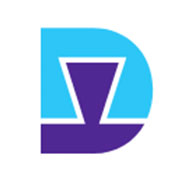
DV Summit: Kickstarter – Maker Education: Part of the solution?

The Design Ventura summit “Design: the problem and the solution” was held on 29 March 2017. Its purpose was to bring together educators, designers, cultural providers and policy makers to discuss how they can ensure that young people are developing creativity, design thinking and employability skills to prepare them for future success.
The following extract is by Carlos Izsak, The Maker Cart, on his take on the issues discussed.
During the Design Ventura summit we heard how creative and design industries are more and more looking at new candidates with art and tech skills. Dr Windsor from Nesta refers to this as Fused skills and in the education world these are more commonly known as STEAM (Science, Tech, Engineering, Arts & Design, Maths). We also heard some interesting discussions on how inadequate our school system is in preparing young people in these skills, most students that do well in STEM don’t take Arts & Design subjects and vice-versa.
Can the Maker Movement and Maker Education provide some answers to address these challenges? and how can we incorporate innovative technology and practices into our schools and other educational institutions?
It’s been fascinating to observe how during the last 10 years the emergence of makerspaces how people are collaborating using new tools and technologies to learn and create amazing projects and products. And how: Creativity, Critical Thinking, Communication and Cooperation (the 4C’s of 21st Century Skills) are strongly encouraged and nurtured in maker education.
As educators, we need to approach Maker Education as learners, showing by example Resilience and a Growth Mindset. That it is ok to find knowledge when we need it (or just in time) as opposed to the just in case model of traditional education. Often Maker projects are riddled with failures which provide the greatest opportunities for learning. The main thing though is to lower the barriers of entry while maintaining a high ceiling.
Now, more than ever, it’s an incredible exciting time for education, with a plethora of tools, toys and machines, cheaper and easier to use than ever! These new technologies together with more progressive pedagogies allow us to better engage (or sometimes re-engage) children and young people in learning useful 21st Century skills. From 3D printers to microbits or even littleBits as we used during our workshop, people can use design thinking, easily prototype electronic projects, mixed them with with arts and crafts and realize great ideas (and iterate).
So the question should not be one of if we should embrace Maker Education in mainstream education but of how can we incorporate Maker Education in everyday teaching? And how can we (as professionals in the field) support teachers in these mighty task?
